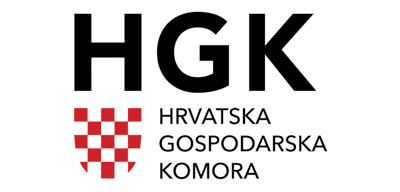Homepage / High quality and food safety standards
High quality and food
safety standards

High standards of food quality and safety are ensured primarily by the strict EU and national legal framework.
As fish is an extremely perishable product, the key to preserving quality and safety lies in the fact that immediately after catching, its body temperature is lowered as close as possible to the temperature of melting ice and kept at that temperature until consumption or processing. Maintaining such a low temperature from catch, during transport and distribution to consumption/processing is called the cold chain and is a legal obligation of all participants in the business of fishery products in the Republic of Croatia. In practice, it is a fish temperature of 0-2 °C, which is achieved already on the fishing boat by a process called shocking. It is followed by further icing and storage of the fish in cooling chambers (or refrigerated trucks during transport) and selling of the fish in refrigerated displays where it is kept on ice until sale to the final customer.
In addition to the temperature, the method of fish handling is also important. Therefore, fishermen shock small pelagic fish (anchovies, sardines, etc.), put them in plastic crates on the vessel and freeze them. After sorting, trawl fish (hake, red mullet, monkfish, prawns, etc.) are packed in disposable styrofoam boxes and iced. In this case, there is a protective film between the fish and the ice that ensures the protection of the fish from the direct impact of the ice. As the ice melts during transport, storage and distribution, the fish is further frozen. Isothermal bins, special containers in which freshly caught and shocked fish are packed, are also widely used. Isothermal bins contain a mixture of ice and water, the so-called wet ice, which has a much better effect of cooling and preserving the quality of fish than classic flake ice.
At low temperatures, enzymes (responsible for loss of freshness) and bacteria (responsible for spoilage) are also "shocked" and will need some time to resume their activity. During this period of their dormancy, the fish is of exceptional nutritional quality, we can say extra quality, and has a rating of 10. This quality of fish is preserved for up to 48 hours after the catch. If the fish is consumed or processed during this period (Phase 1), we can determine with certainty that it is a high-quality food.
After 48 hours, the fish begins to lose its freshness, it is not spoiled, but it is not of extra quality either, and then it is deemed to be of good quality (Phase 2). The next stage is known as aged fish with early signs of spoilage (Phase 3), and defective (putrid) fish (Phase 4). The shelf life of fish at low temperatures varies from species to species, but the range can be said to be 8-14 days.
The entry into the EU and the disappearance of customs and other barriers opened up the possibility for Croatian fish to enter some major export markets (Italy, Slovenia...) while it is still in Phase 1. The same is of course true for the domestic market.
In terms of quality, fish imported from distant areas cannot compete with fresh locally caught fish and the short distribution chain that ensures high-quality raw materials.
Each fish caught by Croatian fishermen is delivered to the first buyer with a transport document, a document which the registered carrier carrying out the transport of fishery products from the landing place to the destination facility fills out after taking over the fishery products at the landing place, and before the start of transport. The transport document has a unique serial number and contains all information about the fish, including information about the vessel, the date of landing, and information about the vehicle and the destination of the fish.
With this document, we assign fishery products a LOT number that follows the fish in all stages of transportation, processing, distribution, and sale. This procedure enables the traceability of fish, that is, the possibility of tracking the movement of fish from the catch on the fishing boat to the end consumer's table.
Based on the markings and data from the label, the producer knows exactly who caught the fish, how it was delivered to facilities for sale or processing, in which facility and when it was processed, which workers processed it, which materials and raw materials were used in its production, to which retail chain it was delivered and under what conditions it was all carried out.
